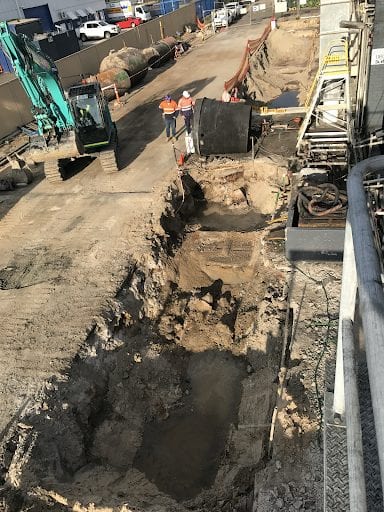
iEnvi staff have developed significant experience undertaking a broad scale of remediation works in Australia and around the world. Our team is built up of integrated professionals who utilise partnerships with external companies and universities to ensure remediation projects are lead by the most effective and strategic thinkers available, with the best strategies and technologies available for consideration.
Our projects range from small, short-term solutions to complex, ongoing environmental and industrial facility management programs partnering with our clients. These projects all share a common focus: starting with the end-point in mind and communicating the entirety of what will be required early on, our driving philosophy for providing exceptional client service and building long-term relationships.
Through this, the iEnvi team have been able to successfully manage multi-million dollar remediation projects in the mining, government, manufacturing and development sectors, as well as small scale single-site remediation projects with tight restraints.
Remediation projects are often restricted by time, space, location and budget, and iEnvi are able to apply a thoughtful management strategy to each individual remediation project to adhere to specific restrictions and ensure the most efficient remediation in the industry is being applied.
If you have soil or groundwater that is contaminated with petroleum hydrocarbons, chlorinated solvents, PCBs, pesticides, hexavalent chromium or heavy metals, PFAS or asbestos, iEnvi can find a cost-effective remediation strategy to restore the subsurface to a condition that is safe to site users and the surrounding environment, and for developments to allow your development to manage excavated materials intelligently, and the best and most cost-effective strategies utilised.
iEnvi leverages the full power of our integrated local and global resources and partnerships, expertise, and experience to provide clients with exceptional service, quality results and enduring value across the entire project life cycle.
Our Approach to Risk Assessment & Remediation
After a DSI indicates there is some risk to people or ecological receptors, or if ground is going to be disturbed for construction/development or activities at a site, then in many cases risk assessment may be the next option, and/or remediation.
iEnvi provides experts who have done it all before. We want the “A” team involved to provide you with the best opportunity to be guides successfully. Our global collaboration model with universities and other firms means you will always get the best solutions and the best experience injected into your remediation project.
A human health and ecological risk assessment (HHERA) is a quantitative calculation of contamination concentration thresholds and risks to identify human health or ecological receptors. This involves detailed analysis of the amount of time, and specific types of receptors, and detailed calculations on the decay or contaminant concentrations through soil and other pathways to a receptors.
Often a HHERA will result in a reduced cost of remediation, or may avoid the need for remediation altogether.
However, if remediation is required, then a process should be followed that is compliant, skilled and minimises commercial uncertainty. We aim to provide information that can be used for financial planning, approval in board meetings, and financing. To do this, we estimate time frames and potential cost ranges early in the process, based on significant experience of our relevant experts.
We remediate soil, groundwater, soil vapour and water - which means we find the most technically and economically successful strategy and technology, and implementation process to benefit the requirements of each project.
A remediation action plan (RAP) should be developed first, to assess remediation strategies that may best be suitable for the site, budget, timeframe and type of contamination; and be compliant and technically successful. From each shortlisted remediation strategy, a set of remediation technologies should be assessed against criteria for the project, and initial pilot trials and/or laboratory bench scale testing may be completed to test which is the most effective technology, or the calibration of the technology, prior to full scale remediation.
iEnvi employs a variety of experienced experts in risk assessment and remediation, and also partners with universities and other firms to ensure the best and most experienced team for each contamination problem is selected for remediation to be completed successfully for you.
Quick Enquiry
Some of the organisations our expert team have helped






